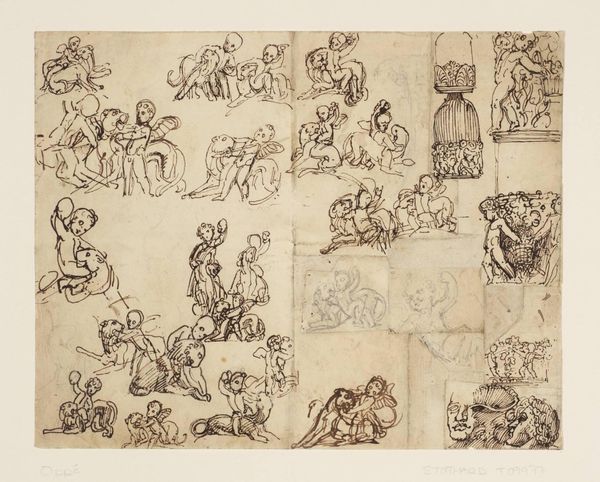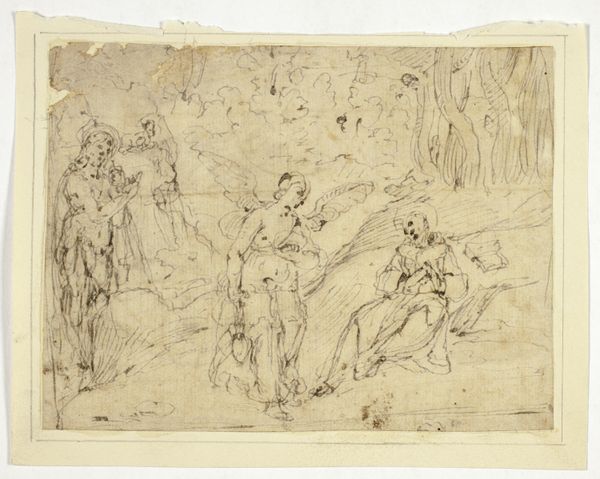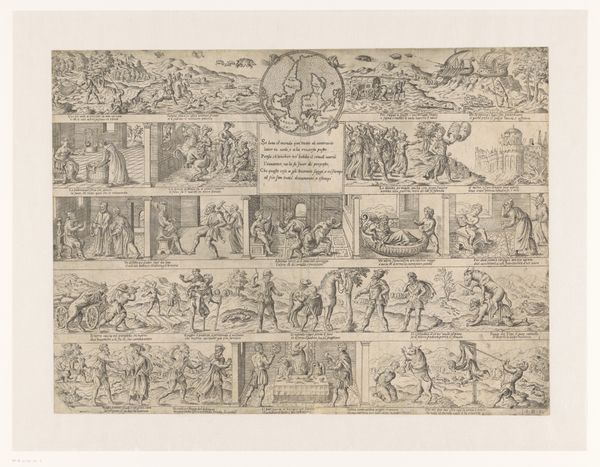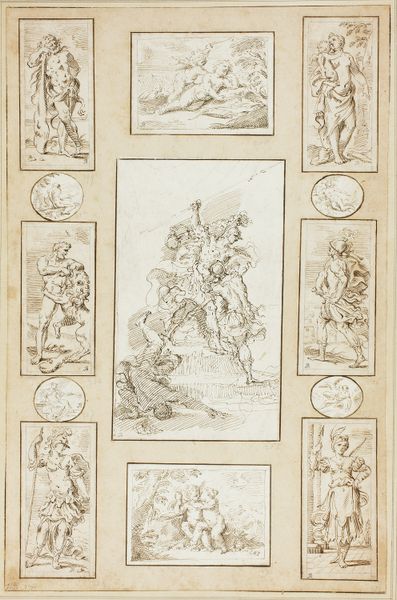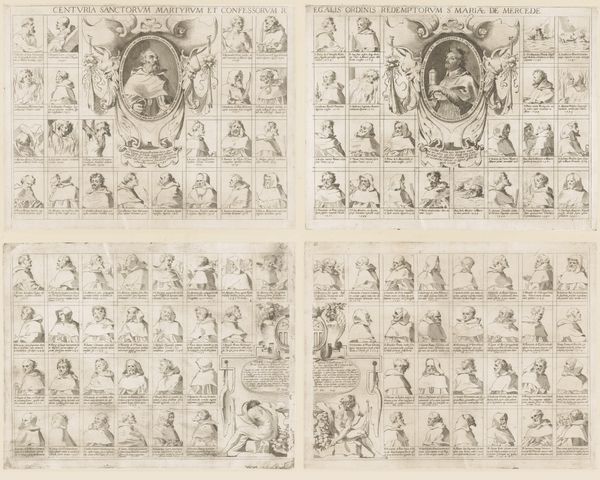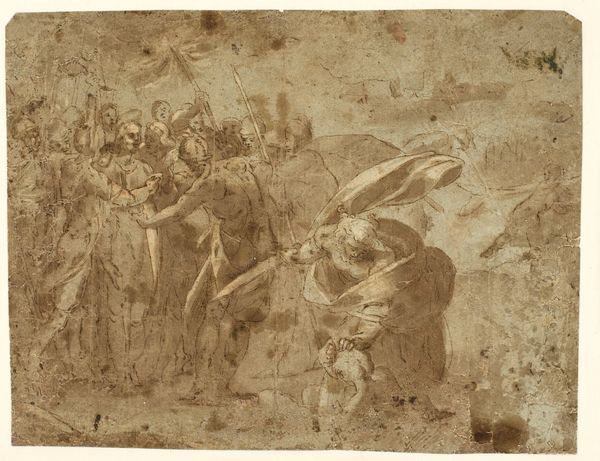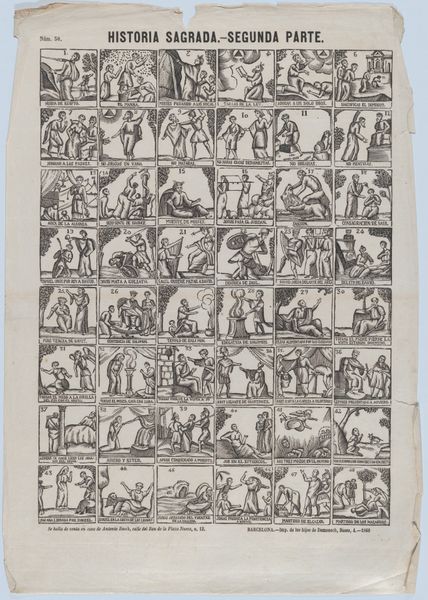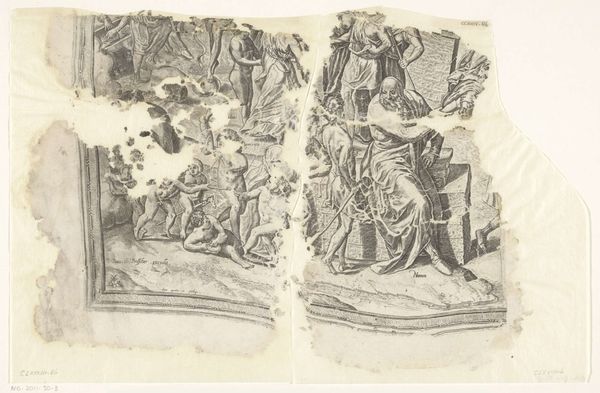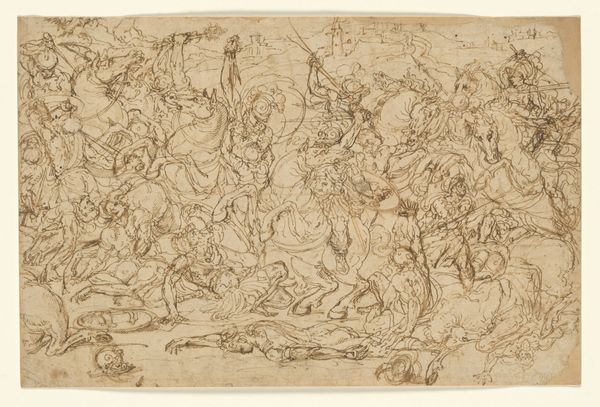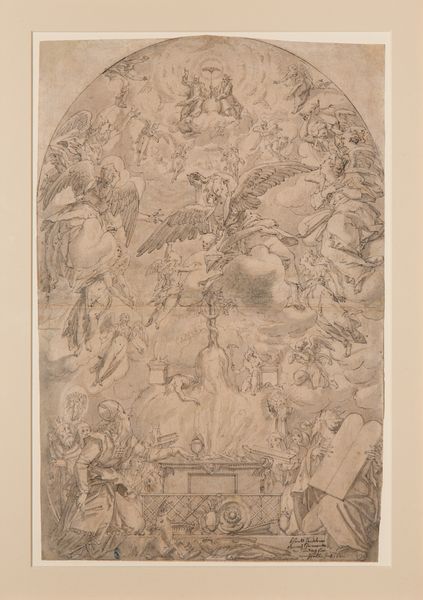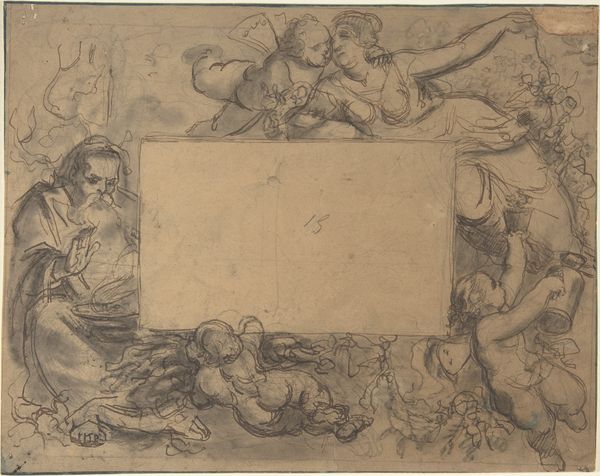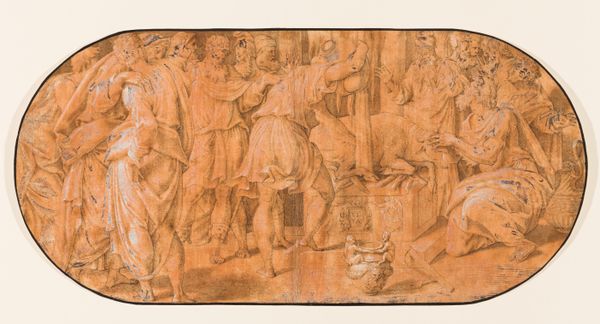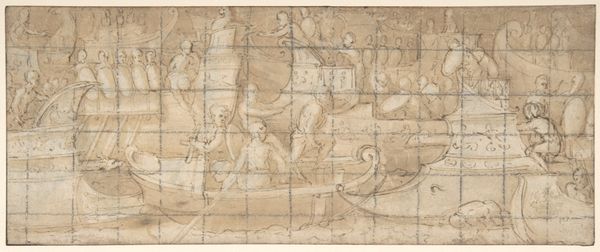
drawing
#
portrait
#
drawing
#
figuration
#
academic-art
Dimensions: 142 mm (height) x 200 mm (width) (bladmaal)
Editor: Right, next up we have “Loose Sketches of Portraits,” dating from sometime between 1743 and 1809, by Nicolai Abildgaard. It’s a pencil drawing with a fascinating collection of faces and figures. There’s a slightly frenetic energy to it, a sense of ideas rapidly put to paper. I’m really drawn to the different characters depicted; some appear noble, others quite comical. What stands out to you when you look at it? Curator: Well, first, I feel like I'm peeking into the artist's mind! It's raw, it’s immediate. This sheet isn't meant to be a finished work, but a playground for Abildgaard's imagination. You see, these aren't necessarily portraits of real people but types, theatrical archetypes, rendered with swift, confident strokes. Can you sense how Abildgaard experiments with light and shadow, testing out different compositions? Editor: Absolutely! I hadn't thought about the theatrical element so directly, but that makes perfect sense given the dramatic poses. So it's almost like he's workshopping ideas? Curator: Precisely! He’s rehearsing expressions, trying out different personas. He may be sketching characters to insert in a future artwork that captures the spirit of Neo-Classical movement. Editor: Fascinating. I initially saw it as a collection of individual portraits, but understanding them as studies for future works really opens it up. Curator: Indeed, and that's the beauty of sketches. They offer such unvarnished access to the creative process. Think of it as witnessing a conversation between the artist and himself as he strives to bring some creative ideas to life on the scene of imagination. Editor: I’m going to have to find out more about his finished works now! It adds such a rich layer to viewing something that might otherwise seem simple.
Comments
No comments
Be the first to comment and join the conversation on the ultimate creative platform.
